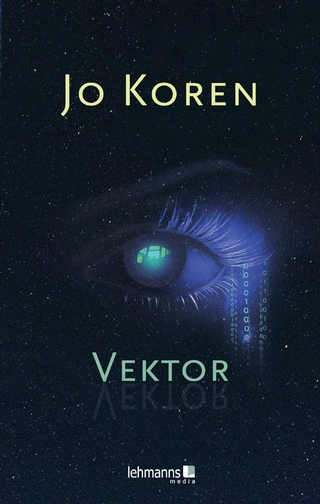
The Routledge Handbook of Religion, Medicine, and Health
Routledge (Verlag)
978-1-138-63006-2 (ISBN)
The relationships between religion, spirituality, health, biomedical institutions, complementary, and alternative healing systems are widely discussed today. While many of these debates revolve around the biomedical legitimacy of religious modes of healing, the market for them continues to grow. The Routledge Handbook of Religion, Medicine, and Health is an outstanding reference source to the key topics, problems, and debates in this exciting subject and is the first collection of its kind. Comprising over thirty-five chapters by a team of international contributors, the Handbook is divided into five parts:
Healing practices with religious roots and frames
Religious actors in and around the medical field
Organizing infrastructures of religion and medicine: pluralism and competition
Boundary-making between religion and medicine
Religion and epidemics
Within these sections, central issues, debates and problems are examined, including health and healing, religiosity, spirituality, biomedicine, medicalization, complementary medicine, medical therapy, efficacy, agency, and the nexus of body, mind, and spirit.
The Routledge Handbook of Religion, Medicine, and Health is essential reading for students and researchers in religious studies. The Handbook will also be very useful for those in related fields, such as sociology, anthropology, and medicine.
Dorothea Lüddeckens is Professor for the Study of Religions with a social scientific orientation at the University of Zurich, Switzerland. Philipp Hetmanczyk is a teaching and research staff member of the Department for the Study of Religions at the University of Zurich, Switzerland. Pamela E. Klassen is Professor in the Department for the Study of Religion at the University of Toronto, Canada. Justin B. Stein is Instructor in the Department of Asian Studies, Kwantlen Polytechnic University, British Columbia, Canada.
Introduction: critical approaches to the entanglement of religion, medicine, and healing Part I. Healing practices with religious roots and frames 1. Afro-Atlantic healing practices 2. Ayurveda: the modern faces of ‘Vedic’ healing and sacred science 3. Curanderismo in the Americas 4. Healing traditions in sub-Saharan Africa 5. Homeopathy and chiropractic in the United States and beyond 6. ‘Mind Cure’ and mindfulness-based interventions (MBIs) 7. The hospice movement, palliative care, and Anthroposophy in Europe 8. Spiritual healing in Latin America 9. Traditional Chinese medicine: history, ethnography, and practice 10. Unani medicine: health, religion, and politics in colonial India Part II. Religious actors in and around the medical field 11. Diagnosing materialism: Ayurvedic purification regimens as spiritual cure 12. Buddhist spiritual caregivers in Japan 13. Chaplains and spiritual caregivers in American healthcare organizations 14. Muslim healthcare chaplaincy in North America and Europe: professionalizing a communal obligation 15. Charismatic healers: embodied practices in US and Singaporean megachurches 16. Energy healing: Reiki, Therapeutic Touch, and Healing Touch in the United States and beyond 17. Gurus and healing: Amma (Mata Amritanandamyi) at the intersection of miracles and medicine 18. Medical missionaries and witch doctors: Protestant object lessons in biomedicine in Africa and the South Pacific 19. Rabbinic authority and reproductive medicine in Israel PART III. Organizing infrastructures of religion and medicine: pluralism and competition 20. Digital tools for fertility awareness: family planning, health, religion, and feminine embodiment 21. The Internet as infrastructure for healing: the case of spirit possession in Japan 22. Markets of medicine: orthodox medicine, complementary and alternative medicine, and religion in Britain 23. Medical pluralism in policy and practice: the case of Malaysia 24. Midwifery and traditional birth attendants in transnational perspective 25. Postcolonial medicine in African contexts 26. Religious entrepreneurs in the health market: opportunities in a field dominated by biomedicine Part IV. Boundary-making between religion and medicine 27. Policing the boundaries of medical science: causality, evidence, and the question of religion 28. Competing religious and biomedical notions of treatment: the case of blood transfusion refusals 29. Ayurveda (re-)invented: engagements with science and religion in colonial India 30. Nurses on the frontline of secular and religious knowledges 31. Religion, culture, and the politics of vaccine hesitancy: perspectives of parents, pundits, and physicians 32. The World Health Organization’s production and enactment of spirituality 33. Contemporary psychiatry and psychotherapy’s engagements with religion/spirituality in Europe and North America Part V. Religion and epidemics 34. Religion, ‘the Chinese virus,’ and perceptions of Asian Americans as a moral and medical menace 35. Defying responsibility: modes of silence, religious symbolism, and biopolitics in the COVID-19 pandemic 36. Christianity and the COVID-19 pandemic in the United States 37. The impact of COVID-19 on religion in Japan 38. A cultural map of the pandemic
| Erscheinungsdatum | 26.11.2021 |
|---|---|
| Reihe/Serie | Routledge Handbooks in Religion |
| Zusatzinfo | 1 Line drawings, black and white; 4 Halftones, black and white; 5 Illustrations, black and white |
| Verlagsort | London |
| Sprache | englisch |
| Maße | 174 x 246 mm |
| Gewicht | 780 g |
| Themenwelt | Geisteswissenschaften ► Religion / Theologie |
| Studium ► 1. Studienabschnitt (Vorklinik) ► Med. Psychologie / Soziologie | |
| Naturwissenschaften ► Biologie ► Humanbiologie | |
| Sozialwissenschaften ► Ethnologie | |
| Sozialwissenschaften ► Soziologie | |
| ISBN-10 | 1-138-63006-3 / 1138630063 |
| ISBN-13 | 978-1-138-63006-2 / 9781138630062 |
| Zustand | Neuware |
| Informationen gemäß Produktsicherheitsverordnung (GPSR) | |
| Haben Sie eine Frage zum Produkt? |
aus dem Bereich


